How far does a model advance after almost 50 years and ten generations? More than just a bit. The 11th iteration of Civic shares little in common with the original apart from having a transversely-mounted four-cylinder engine driving the front wheels and a Honda badge. The new Civic, available here in one, high-spec Sport variant, is more than 1.1 metres longer than the original, twice as heavy, and 254 per cent more powerful. Where the original had unassisted steering, this one can steer itself. While originally a small car, Civic is now larger than most generations of the Accord. That nameplate is now lost to our market, like many larger sedans and wagons.
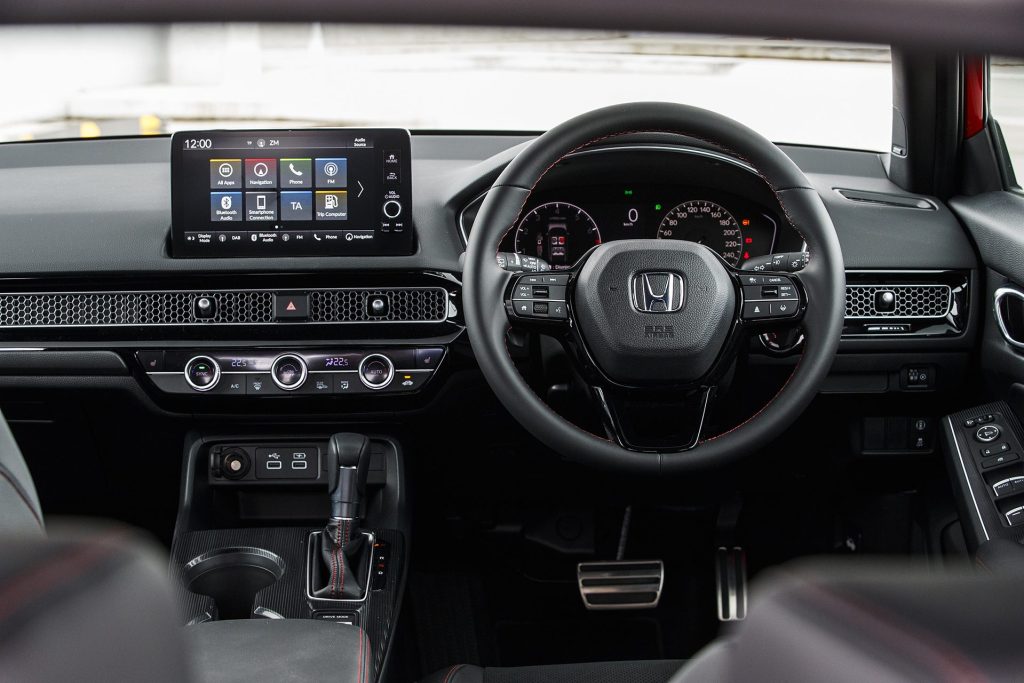
But today’s five-door hatches are more sophisticated, refined and accommodating than their forebears, and so Civic now compensates for the lack of an Accord. With a market dominated by SUVs, this feature-replete Civic is the only option for a Honda buyer who wants something bigger than the Jazz, but doesn’t want that something to be an SUV. While highly specified, it asks a decent wedge, the humble Civic now $47,000, not far off the price of the top CR-V.
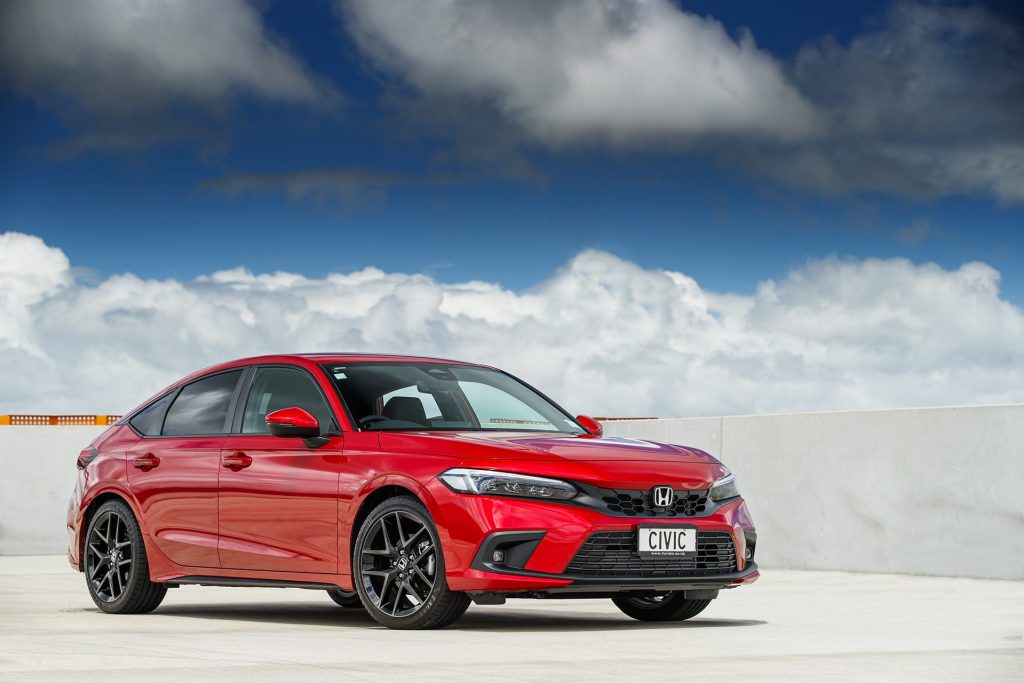
But Civic buyers are getting quite some car now. At 4.35m long, it’s only 30mm longer than last model, but some clever rearranging of the dimensions has blessed it with genuinely decent interior space. They have trimmed the front and rear overhangs but added 35mm to the wheelbase, all of that dedicated to rear seat space and a more generous load area. The styling is something quite different too. It’s still sporty looking but less racy. The A-pillars have been pulled back to lengthen the bonnet line, which is actually 25mm lower than the previous model, though the grille is more upright. It has a low beltline and a larger glasshouse, while that reduction in rear overhang gives it a coupe-like profile as the roofline dives away aft of the C-pillar.
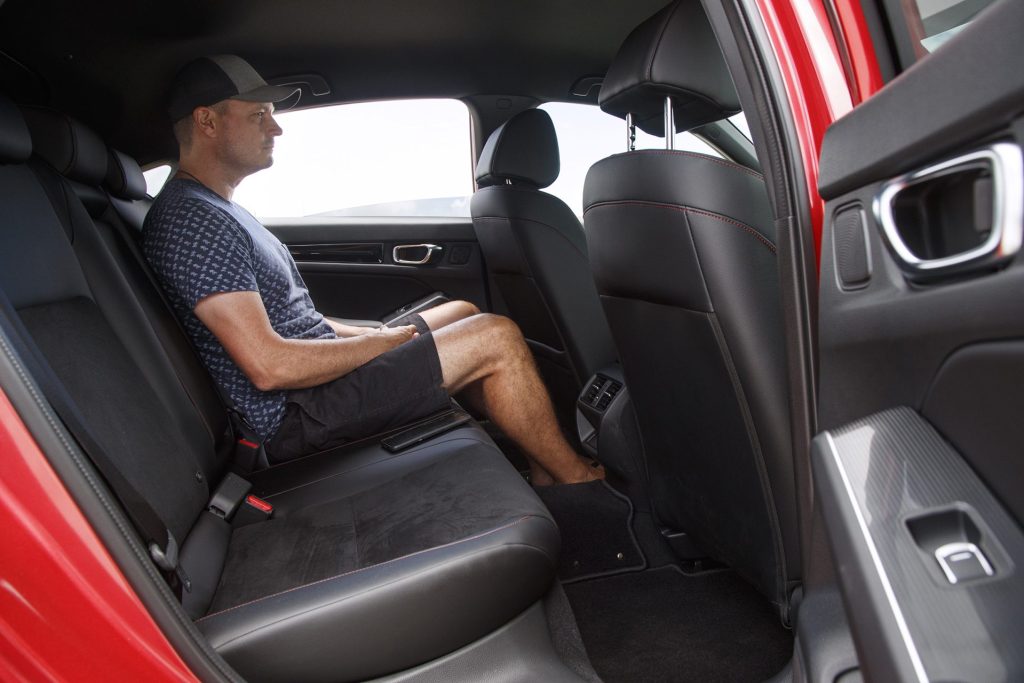
Yet the styling doesn’t come at the expense of practicality. The Civic follows Honda’s “Man Maximum/Machine Minimum” design philosophy which aims to maximise the total environment for the passengers, while minimising the space needed for mechanical components. For rear passengers, that has seen a redesign of the hatch to allow for that sloping roofline without it robbing headroom. Or making entry difficult either, and once in you’ve got genuinely decent legroom and a comfy seat under your buns.
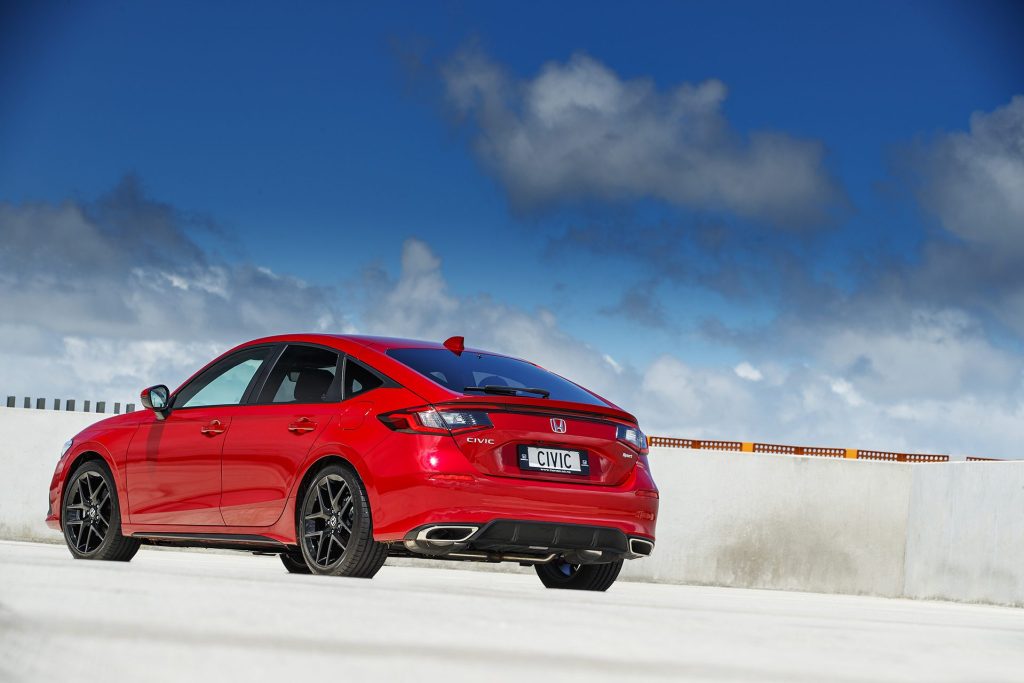
That Man Maximum mantra means generous cargo space too, 404 litres of it. And there’s a 45L cubby under the floor, though this comes at the expense of a spare tyre. The hatch opening is wide, the load height low and though there is a slight step up in the floor towards the front, the boot is otherwise practically formed. Folding the seat is easily performed while Honda’s side pull cargo cover is ingenious. It works perfectly when you need to hide stuff but never gets in the way like most others do.
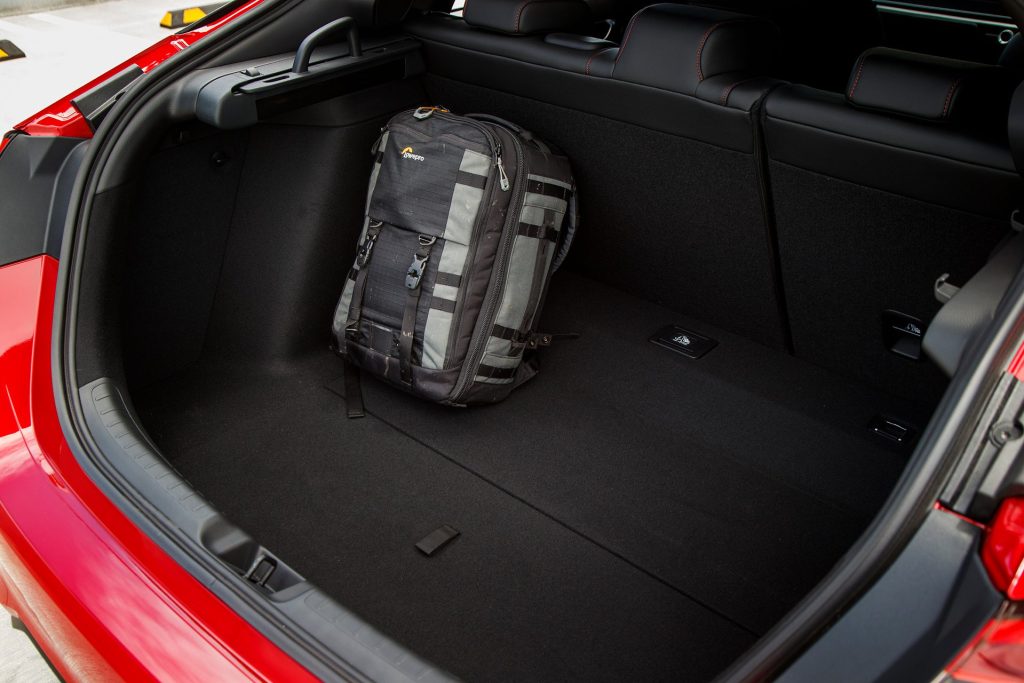
In behind the wheel, the new seats embrace you in a sporty manner and are covered in a sports-themed leather and perforated suede-like trim. To go with the Sport nomenclature, you can adjust them low, the wheel offering a good range of movement too. While the exterior is vibrant in this red hue (one of only four colour options) it’s all pretty black inside, apart from some red thread and a splash of silver on the knobs. These allow the ventilation to be adjusted simply, and have a considered, tactile feel. The touch points and the build are thoroughly decent, kind of what you expect from a Honda. We like the honeycomb grille across the dash, creating that sense of width in the cabin while also neatly hiding the vents. Storage is reasonable and everything is logically sited, the cup holders generous, the charge pad accessible. The enlarged glasshouse and the low front cowl deliver better forward vision, though the C pillar is fairly chunky, restricting the rear view. The reversing camera now has a much better resolution and field of view however.
That’s thanks to the new nine-inch ‘Advanced Display’, hi-res infotainment system. This delivers a better user experience than the old Honda system. It’s not class leading but at least logical, quick enough in action and features a few hard buttons, including an actual volume knob. The sat nav is much improved too, but there’s no voice input for anything other than dialling a phone number. Wireless CarPlay makes the list as does Android Auto. There is a Bose premium sound system that rocks pretty hard too.
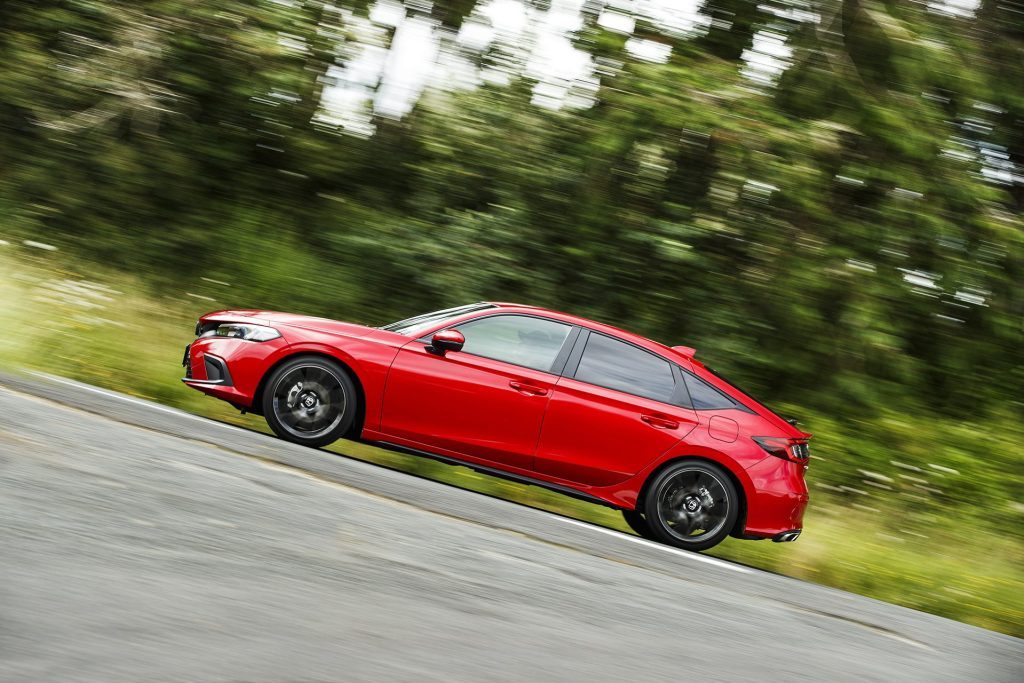
As per the new car script, the body is now more rigid, stiffer by almost 20 per cent, the use of ultra-high tensile steel also helping purge 15kg from the structure. Most bits underneath have come in for a tweak; the steering retuned to provide better feedback while a new front subframe helps too. The rear track is a little wider and more compliant bushings benefit the ride. Honda reckons the redesign delivers ‘a refined and fun driving experience, while still delivering a comfortable ride’. And that’s on the money, though maybe it’s more satisfyingly proficient than fun to drive. The steering does feel well connected, the tuned assistance giving it a fluid action. And it’s quick to turn in. Civic delivers a well concocted dynamic mix with equal measures of roll control and bump absorption; it’s stable through a series of curves while also brushing off most of the rough bits. It gets into a flowing rhythm with the road. As we said, satisfying. This is a great platform for the Type R to spring from.
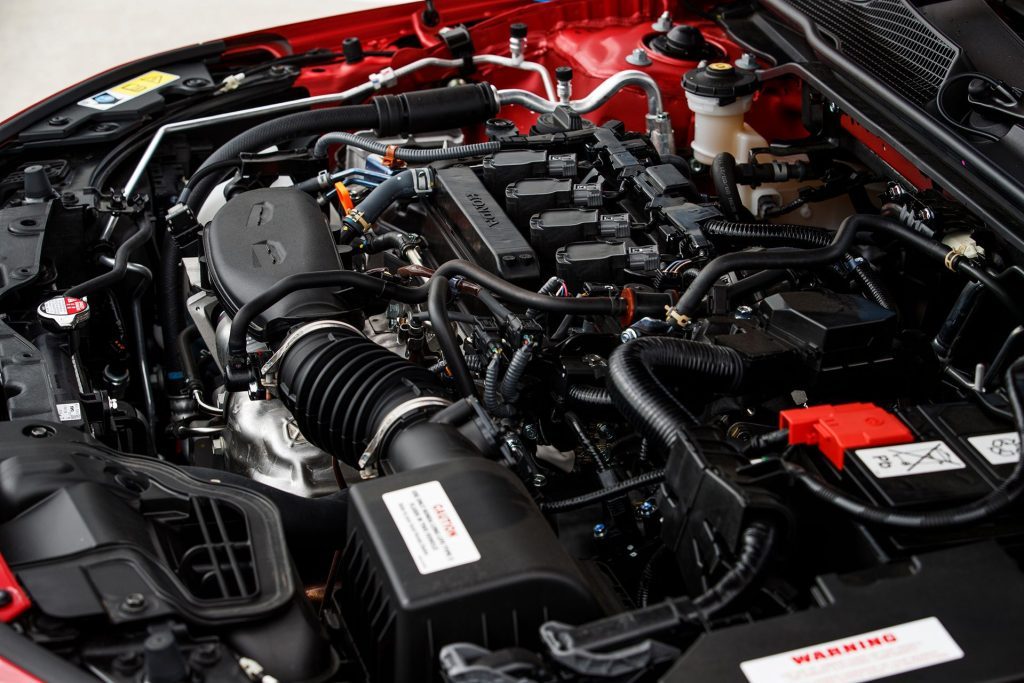
The 1.5 turbo returns, updated for more power and torque, now with 131kW and 240Nm, while running happily on 91 octane. There’s a new turbo, and associated plumbing (including a new manifold) to aid response, while efficiency is honed with the addition of Honda’s VTEC on the exhaust valves. The torque is the key, the Civic mooching along on that plumped-up curve. It’s a little slow on initial take off but that’s more to do with the CVT than turbo lag, of which there is little. It’s one smooth drivetrain on the commute, effortless and refined, with a decent spring in its step once engine speeds pass 2500rpm. Updates for the CVT include faux shifting when you’ve got the hammer down. Still, it does little to alleviate the soulless engine note as revs rise. Thankfully it’s fairly muffled.
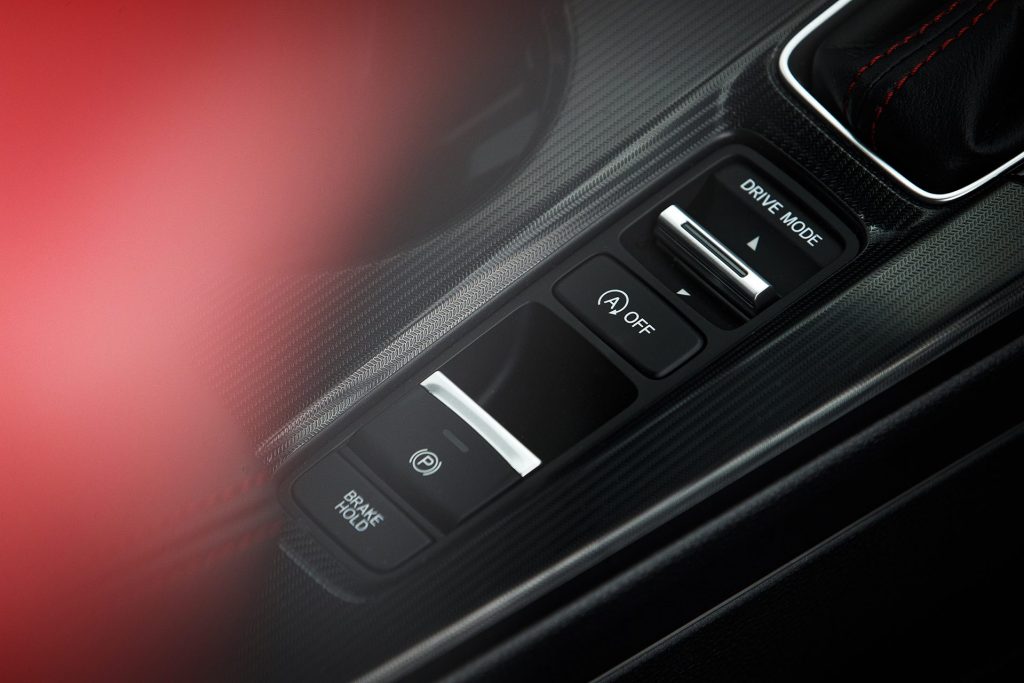
The new Sport mode aids transmission response, as it keeps the gear ratio shorter to ensure at least 2000rpm is dialled in. And so when you’re on and off the gas, there’s a better ‘in-gear’ feel with less of that awful ‘elastic’ CVT slop some such transmissions still serve up. While the rocker switch for the drive modes (others being Normal and Eco) is relatively easy to access, an S stop on the gear lever would have been easier still. As to fuel use, Honda claims an average of 6.3L/100km, but a figure in the nines is more realistic, less if you do more highway running.
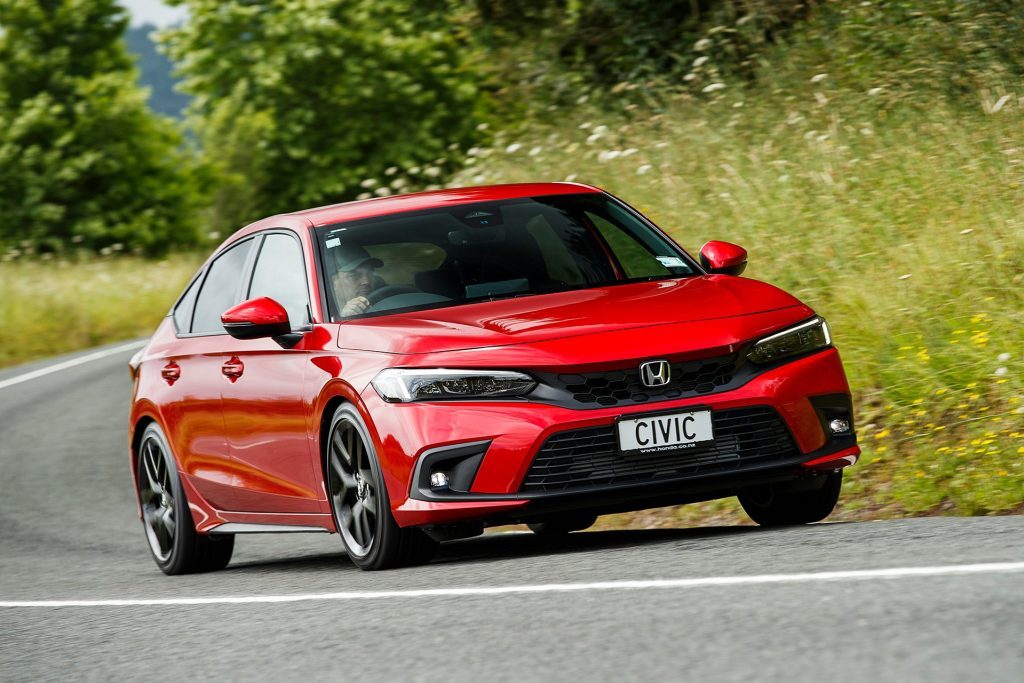
The in-town progress is decent, the Civic always feels controlled yet isn’t harsh riding, taking the sting from hard edges adeptly. Coupled with the refined and torquey powertrain, and the quick, light steering, it has a big car feel about it.
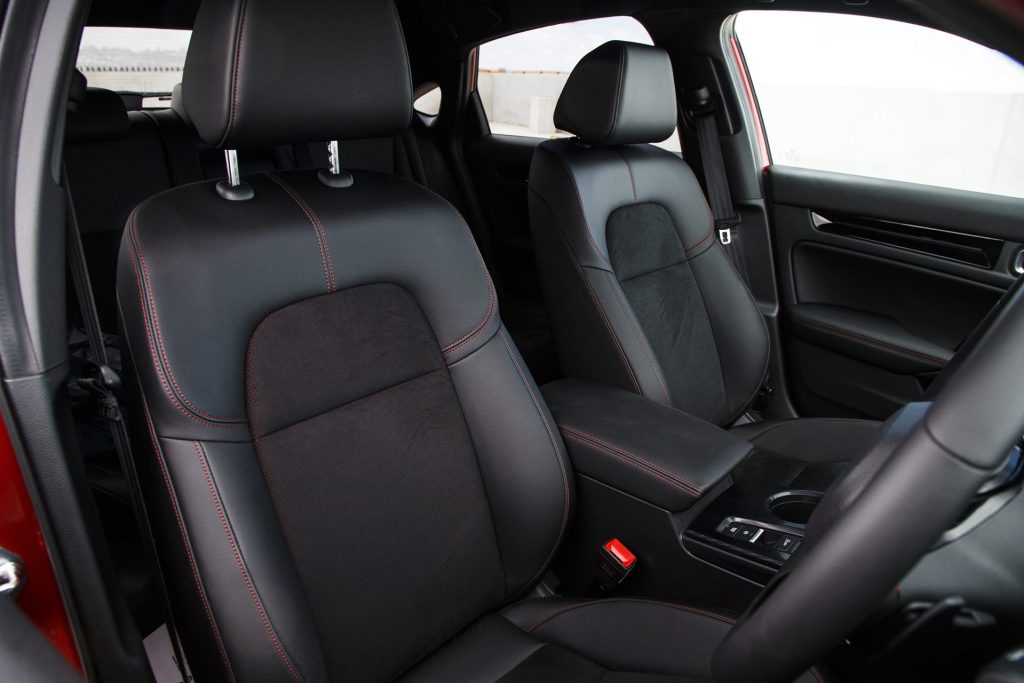
Honda’s ‘Sensing’ safety tech has been overhauled too, now using a single-camera while improved processing better identifies the road lines and safety risks. They say the adaptive cruise has been tweaked for ‘more natural brake feel’, tick, and quicker reactions, but it could do better when there are more cars about, for it gets a bit flummoxed with all the lane changing and turning. It works well in slow grinding traffic.
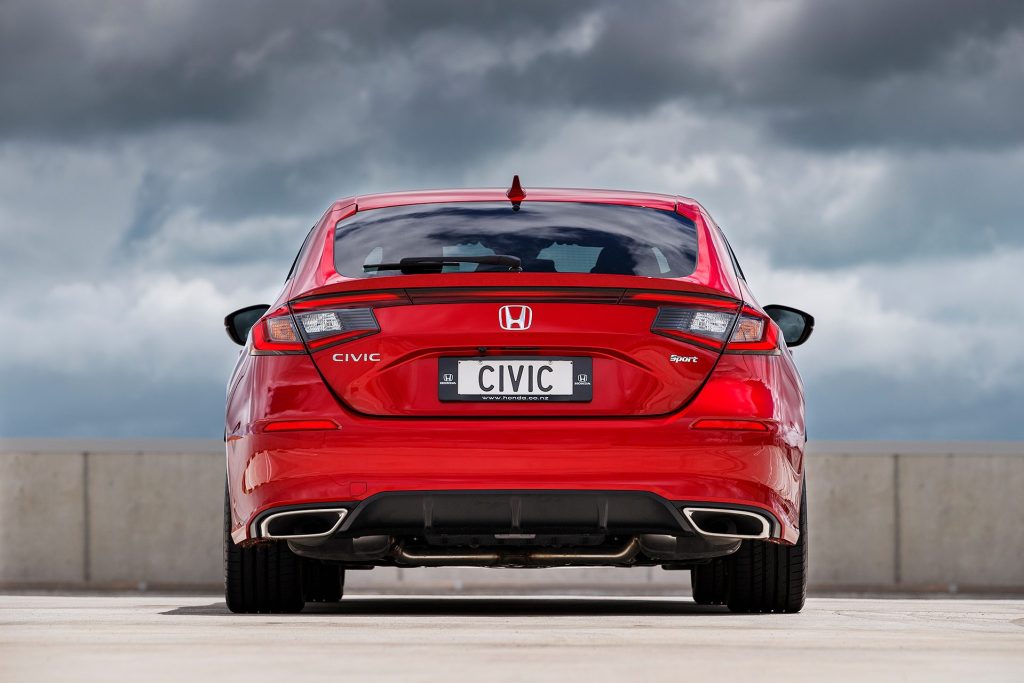
The Civic Sport, while up there in terms of asking price, is a great antidote to the SUV, and what I’d personally prefer to drive in the Honda line-up right now. Hang on, what’s that Darl, you say you want the CR-V? Oh, okay then…
| Model | Honda Civic Sport |
| Price | $47,000 |
| Engine | 1498cc, IL4, T, DI |
| Power | 131kW/240Nm |
| Drivetrain | CVT, FWD |
| Fuel Use | 6.3L/100km |
| C02 Output | 148g/km |
| 0-100km/h | 7.58sec |
| Weight | 1369kg (claimed) |


